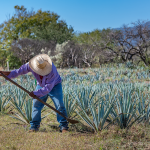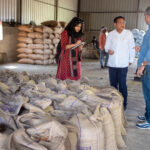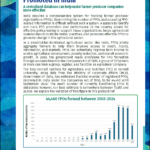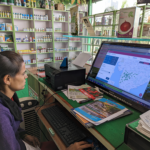Tag: FPO-Led Small Farm Market Access Models

Enhanced FPO Platform for India Launches New Business Networking Feature
The Tata-Cornell Institute for Agriculture and Nutrition (TCI), with support from the Walmart Foundation, has enhanced the FPO Platform for India, introducing new data and features with information on nearly 45,000 farmer producer organizations (FPOs).
The new platform includes a…

TCI Publishes 2024–25 Annual Report
The Tata-Cornell Institute for Agriculture and Nutrition (TCI) has published its 2024–25 Annual Report.
The report offers an in-depth look at the full range of TCI’s research and other activities, including grant-funded projects like the Zero-Hunger, Zero-Carbon Food Systems project…

Selecting the Best AI Search Tool for the FPO Platform for India
When I first heard about the Tata-Cornell Institute’s FPO Platform for India, I wasn’t entirely sure what to expect. I knew it had something to do with farmer producer organizations (FPOs) and helping improve agricultural value chains, but I kept…

Conference to Support FPOs in Latin America
The Tata-Cornell Institute for Agriculture and Nutrition (TCI) is co-organizing and cosponsoring a hemispheric conference in support of farmer producer organizations (FPOs) in Latin America. “Smallholder Producer Organizations as Business Entities in Latin America: Scope, Challenges and the Road Ahead”…

TCI Publishes 2023–24 Annual Report
The Tata-Cornell Institute for Agriculture and Nutrition (TCI) has published its 2023–24 Annual Report.
The report offers an in-depth look at the full range of TCI’s research and other activities, including projects like Zero-Hunger, Zero-Carbon Food Systems, and field research…

FPOs Would Get Boost from Centralized Database
India is betting big on farmer producer organizations (FPOs) to boost its agricultural sector and improve the livelihoods of smallholder farmers, but its efforts would be enhanced by the creation of a centralized system of tracking FPOs, according to the…

Identifying the Number of FPOs Promoted in India
This special policy brief provides an estimate of the number of active farmer producer organizations (FPOs) promoted in India from 2003 to 2024 and makes the case for a centralized system for tracking FPOs. A system to identify and track FPO promotion and performance in...

How Many FPOs Are There in India? How We Counted the Number of Farmer Producer Organizations
Farmer producer organizations (FPOs) have the potential to significantly aid smallholder agricultural development through the power of aggregation. In India, where most farms are smaller than a hectare, well-functioning FPOs can boost farm incomes through better market linkages and increased…

Building India’s First FPO Data Dashboard
“How many FPOs are there in India?” This seemingly simple question marked the beginning of an unexpected challenge when I began working on the Tata-Cornell Institute’s project on FPO-Led Small Farm Market Access Models in 2019.
Farmer producer organizations (FPOs)…

How Soybean FPOs Can Use Futures Contracts to Manage Risk
Price volatility affects all members of the agricultural value chain, but smallholder farmers in developing countries are particularly vulnerable to adverse prices. In general, price hedging mechanisms for smallholder farmers are limited and, in many cases, not used. With appropriate…

